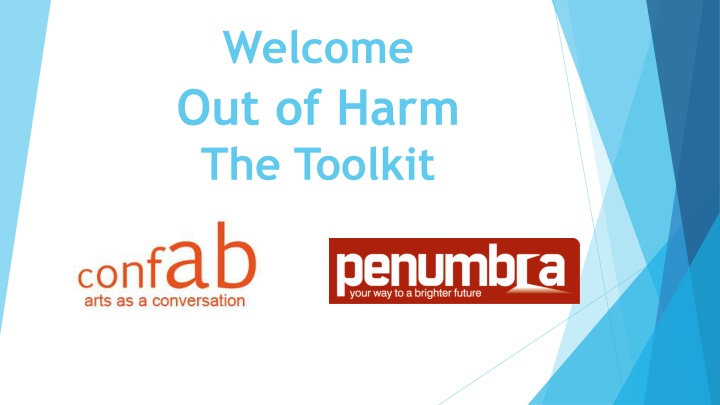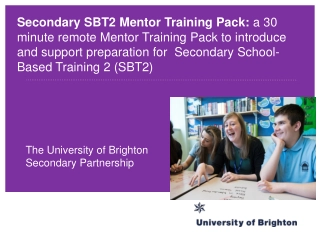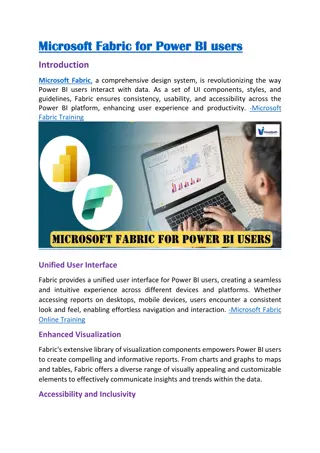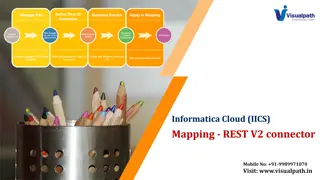
Self-Harm and Supporting Young People
Explore a comprehensive toolkit for understanding self-harm, guiding conversations, and providing support to young individuals in distress. Learn about triggers, coping strategies, and the complex nature of self-harm behavior. Enhance your knowledge to approach the issue confidently and sensitively.
Download Presentation

Please find below an Image/Link to download the presentation.
The content on the website is provided AS IS for your information and personal use only. It may not be sold, licensed, or shared on other websites without obtaining consent from the author. If you encounter any issues during the download, it is possible that the publisher has removed the file from their server.
You are allowed to download the files provided on this website for personal or commercial use, subject to the condition that they are used lawfully. All files are the property of their respective owners.
The content on the website is provided AS IS for your information and personal use only. It may not be sold, licensed, or shared on other websites without obtaining consent from the author.
E N D
Presentation Transcript
Welcome Out of Harm The Toolkit
Housekeeping 2 http://www.confab.org.uk/out-of-harm
Introductions Who are we? What do we do? What are your best hopes for today? Safe space Working together http://www.confab.org.uk/out-of-harm 3
Aims and Outcomes Aims Concise introduction to self-harm and young people Provide an understanding of the Toolkit and how to use it Enable alignment of the Conversation Guide to your service and role The role of confidentiality and Child Protection Closing discussion Outcomes By the end of the workshop you will have confidence in approaching the issue of self-harm with a young person you are concerned about 4 http://www.confab.org.uk/out-of-harm
Triggering is a term used to describe when something, a trigger, causes a negative emotional response. You won t be able to predict these or avoid them all Keep the conversation person centred Understanding Triggers Do empathise with their feelings Don t ask to see the self-harm Don t focus on the self-harm http://www.confab.org.uk/out-of-harm 5
What is Self-Harm? Self-harm is a symptom and coping strategy of emotional distress ~ Out of Harm Toolkit http://www.confab.org.uk/out-of-harm 6
What is self-harm? Self-harm is harming yourself on purpose. Self-harm isn t a mental illness but it is often linked to mental distress There are lots of reasons why people self-harm. It could be because of feelings or thoughts that are difficult to deal with. Some people self-harm because it feels like a method for releasing tension. It s a physical pain you can deal with, rather than a feeling or emotion that can be hard to cope with. Self-harm can also be used as a way of punishing yourself for something you feel bad about. Sometimes people self-harm because they feel alone or angry or not good enough. Self-harm can be really personal and complicated, so it s okay if you don t know the reasons behind self-harm. http://www.confab.org.uk/out-of-harm 7
Types of Self-Harm? There are lots of different ways someone could self-harm, including: cutting or scratching causing bruises banging their head against a wall punching a wall pulling out their hair burning falling over on purpose breaking a bone on purpose. http://www.confab.org.uk/out-of-harm 8
It takes a lot of courage for someone to disclose this kind of information. Take it slowly, offer praise and encouragement and err on the side of silence if you are unsure what to say. ~ Out of Harm Toolkit The Conversation Guide http://www.confab.org.uk/out-of-harm 10
Attention NEEDING Not Attention SEEKING http://www.confab.org.uk/out-of-harm 11
Step 1. Opening Up Start here if you re concerned about a young person and are initiating the chat Skills Reflecting Observing Asking a direct question http://www.confab.org.uk/out-of-harm 12
Step 2. Acknowledging Start here if a young person discloses their self-harm to you Skills Empathy Understanding listening http://www.confab.org.uk/out-of-harm 13
Brene Brown on Empathy http://www.confab.org.uk/out-of-harm 14
Step 4. Exploring Skills Asking questions Listening Acknowledging coping strategies Reflecting Positive reinforcement http://www.confab.org.uk/out-of-harm 15
Step 5. Closing Skills Reassuring Next steps Self-care 16 http://www.confab.org.uk/out-of-harm
Remember not to confuse the risk of self-harm with suicide, and don t break confidentiality if there is no risk to the young person s life, and not without talking about it with them first. ~ Out of Harm Toolkit http://www.confab.org.uk/out-of-harm 17 This Photo by Unknown Author is licensed under CC BY
3. Confidentiality and Child Protection I m not going to share what you tell me with anyone else unless you want me to, or you tell me something that makes me think you are at risk or another person is at risk. I would want to get you some help but we can talk about how best we can do that in a way that will make you feel safe. ~ Out of Harm Toolkit http://www.confab.org.uk/out-of-harm 18
Scenarios http://www.confab.org.uk/out-of-harm 19
Staying Calm H.A.L.T Hungry Angry Lonely Tired Mindfulness Awareness of space around you 5 senses Breathing with your hand http://www.confab.org.uk/out-of-harm 20
Positive Coping Strategies Listening to music Talking to friends or family Writing down or drawing how you feel Exercise Drawing on the place you want to harm with a red pen Snapping an elastic band Holding ice http://www.confab.org.uk/out-of-harm 21
All behaviour is communication Challenging Distressing Testing one's abilities; demanding causing anxiety, sorrow or pain; upsetting inviting competition; provocative http://www.confab.org.uk/out-of-harm 22
Peoples needs are best met, by people whose needs are met http://www.confab.org.uk/out-of-harm 23
Self Care DON T TAKE THINGS PERSONALLY BE REALISTIC TALKING ABOUT SELF- HARM CAN BE HARD AND IT CAN MAKE YOU FEEL FRUSTRATED, HELPLESS, ANGRY AND SAD. TAKE CARE OF YOURSELF LET THEM LEAD BE PATIENT STAY CALM THIS IS THE FIRST STEP ON THEIR JOURNEY TO RECOVERY http://www.confab.org.uk/out-of-harm 24
Contact us for further info on full and half-day workshops admin@confab.org.uk http://www.confab.org.uk/out-of-harm 25






















